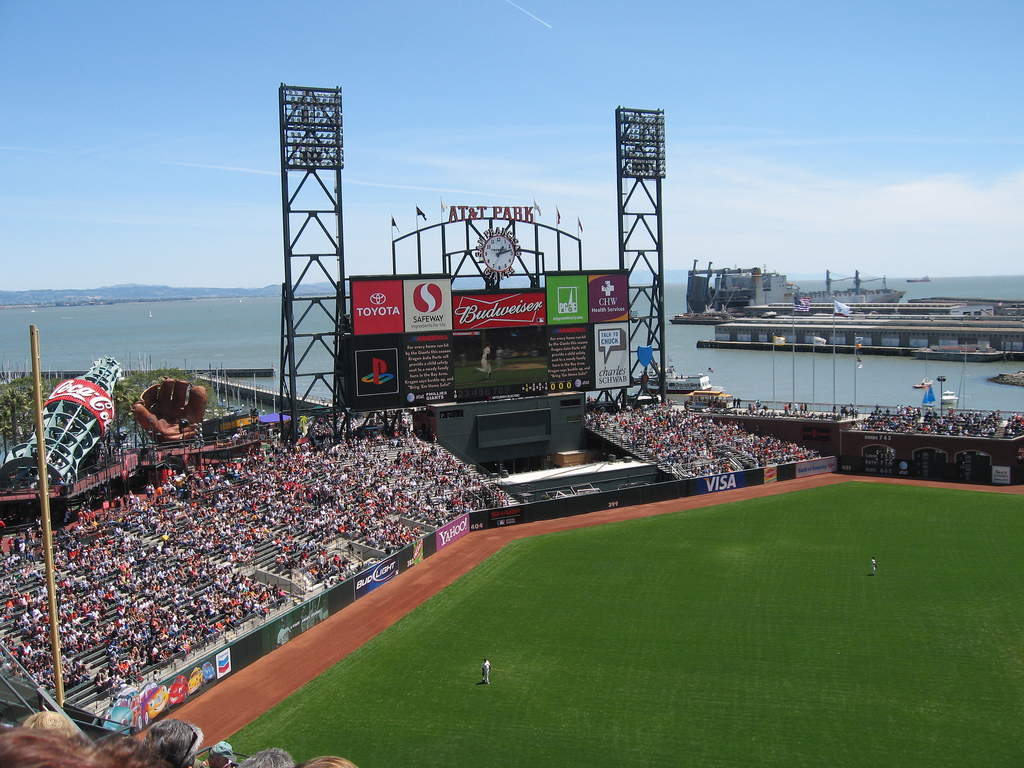The Astrodome was the most relevant stadium of its time. With the largest JumboTron, the trendiest color choice and a very modern, symmetrical design, it embodied the Space Age. It was the anti-Fenway. It was the ballpark of the future. It was relevant.
It began with the notion of “blow the old crap up and just build something new!”
The Astrodome wasn’t developed with the purpose of baseball in mind, though. A simple foul ball nearly blinded the players, so they had to paint the ceiling tiles, which killed the grass, which led to Astro Turf. Astro Turf was relevant. It made sense. It was absolutely space age! Except it looked ugly and it meant a diving catch could end a career. The stadium, once relevant, became a joke.
Remember Carmen San Diego? Remember Lazer Discs? Remember WebQuests? Remember how all of those innovative technologies were going to transform learning? Remember the Information Superhighway and the fact that “kids don’t learn the same way?” Remember how computers were going to replace teachers? Remember when MOOCs were going to replace universities? Remember when flipped learning was going to kill direct instruction?
It has me thinking about Fenway Park. The stadium was designed to fit the community, which explains the quirky field dimensions and why it continues to be one of the most creative designs in baseball. It was designed to fit the game of baseball, which is why it’s so classic.
I want to teach more like Fenway and less like the Astrodome. Or better yet, I want my teaching to be a hybrid ballpark like AT&T Ballpark or Camden Yards, where there are still new innovations in structure and design (no one’s staring at a pole like they do in Fenway), but a clear embrace of the context, the community and the classic ideas. I want to start with meaning and purpose rather than innovation-for-the-sake-of-innovation.
We Are Most Innovative When Innovation Isn’t the Goal
When I think of Camden Yards or AT&T Ballpark, I notice the following things:
- A recognition that vintage ideas can be just as relevant as futuristic ideas
- A connection to the local community
- Focusing on purpose and people rather than the latest fads
- Using technology wisely rather than trying to make things technology-driven
- Thinking creatively about the physical space and limitations, so they become strengths rather than liabilities
Those are all things I’d love to see schools embrace.
Consider Camden Yards for a moment. It is now one of the most distinctive stadiums in all of baseball. It turns out, years later, that we can point to it as revolutionary. It was the first in a movement away from donut-style stadiums. It was a bold step toward creating real ballparks designed for the game. And yet, it was innovative because it began with the game in mind. They didn’t get together and say, “Let’s make something innovative.” They said, “Let’s make the best ballpark we can make.”
Purpose is what drives creativity.
When we are less concerned with what is new and bold and different and focus instead on what matters, we end up pursuing creativity. We are so driven to make something that matters that we end up making something differently. Boldly different. Wildly creative. But the goal isn’t to be different. It’s to make something that matters.
photo credit: game on! via photopin (license)
Looking for more? Check this out.
Join my email list and get the weekly tips, tools, and insights all geared toward making innovation a reality in your classroom. You’ll get members-only access to the exclusive design thinking toolkit (complete with an eBook, suite of tools, and free maker project) that has helped thousands of teachers get started with design thinking and project-based learning in their classrooms.

This is a great post, Pal.
So often, we forget that different isn't always better. Yet the temptation for "change agents" is to change everything.
That's why I'm so passionate about evolutionary rather than revolutionary change. It's a Steven Johnson idea. No sustainable change happens in dramatic leaps and bounds anywhere in nature, so to think that we can sustain radical change — or that radical change is even necessary — in leaps and bounds in organizations is misguided thinking.
So how do we change that thinking? How can we get people to teach more like Fenway and less like the Astrodome — because we are literally surrounded by Astrodomes in education, and that sucks.
Hope you are enjoying a great holiday break!
Bill
Great post. Been thinking about this a lot. I will come back to this post as I am running a workshop on the very topic next year. Thanks as always for saying the right thing the right way.